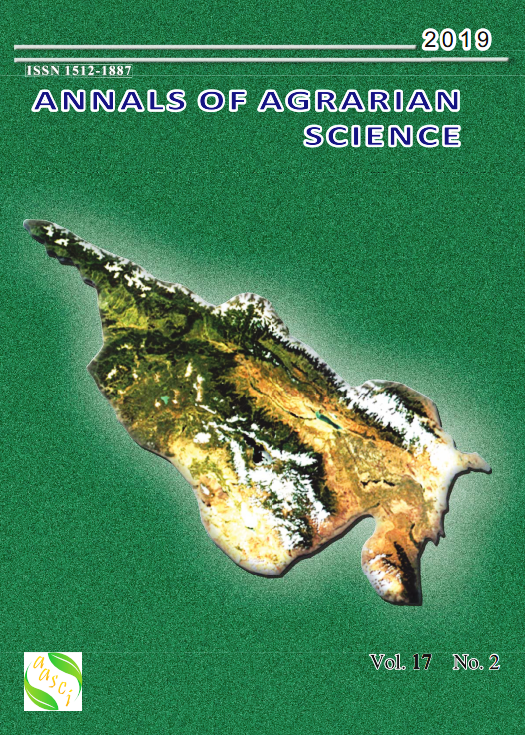Sustaining paddy production through improved agronomic practices in the Gangetic alluvial zone of West Bengal
Keywords:
Integrated nutrient management, paddy cultivation, cropping sequence, crop nutrient uptake, organic manure, chemical fertilizerAbstract
The article includes the research in Khevi region of Central Great Caucasus. Study area was divided by expositions (north and south), Excessive and imbalanced use of chemical fertilizer in modern agriculture has downgraded soil health. Farmers very often avoid organic fertilizer in crop production due to its unavailability. Stubble removal and other unscientific cultural practices are more likely to enhance soil degradation process and crop production in longer term. Here we undertook an experiment to identify suitable agronomic management practices for paddy cultivation in the Gangetic alluvial zone of West Bengal, India. Interactions between different cropping systems (Rice - Rapeseed - Fodder cowpea, Rice - Field pea - Fodder cowpea and Rice - Wheat - Fodder cowpea) and available nutrient sources through chemical fertilizer alone or in combination with organic fertilizers were studied. Crop uptake of nitrogen, phosphorous and potassium vis-a-vis different yield components as affected by management practices were investigated. Incorporation of leguminous crop (field pea) in the cropping sequence resulted in enhanced nutrient uptake and paddy production than other cropping systems. Application of organic manures mixed with chemical fertilizer has resulted into higher nutrient uptake and crop yield than chemical fertilizers alone. However, there was a significant difference with type of organic manure used. Application of farm yard manure and bio-gas slurry has resulted in maximum nutrient uptake and yield. Farm yard manure and bio-gas slurry being nitrogen poor, have the ability to supply nutrient for a longer time before exhaustion than nitrogen rich vermicompost and azolla. Our findings will be helpful to farmers for better use of their resources in agricultural management.



